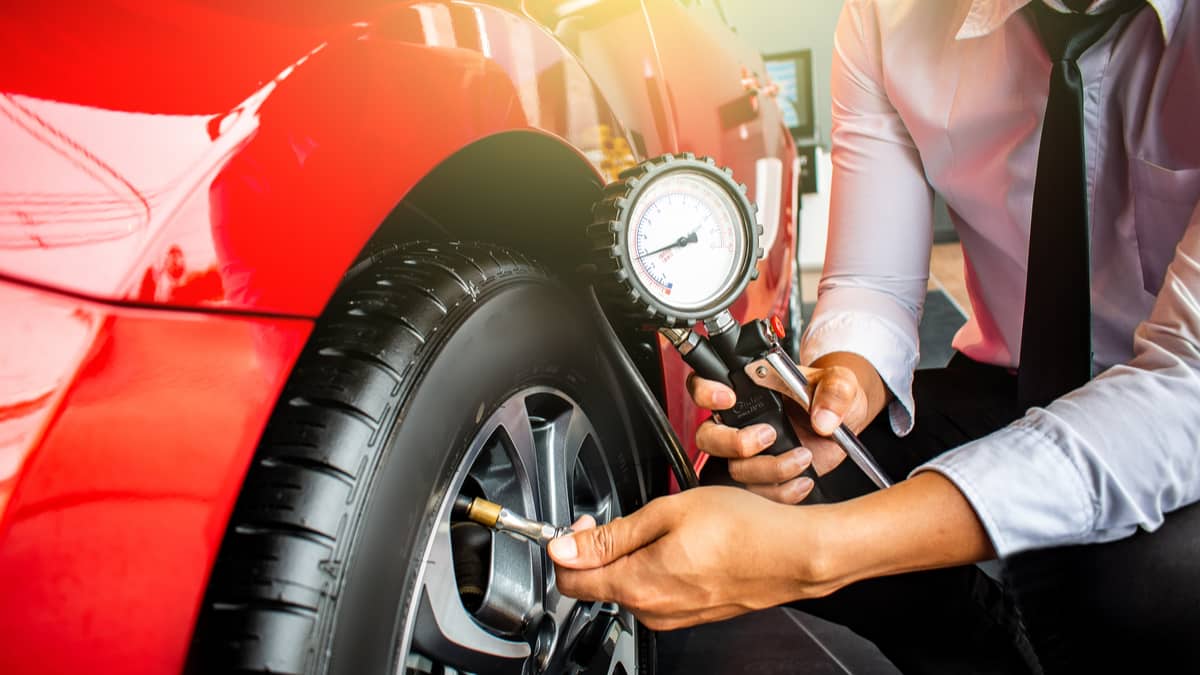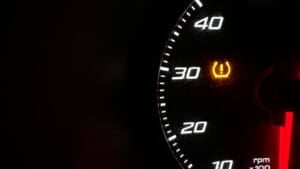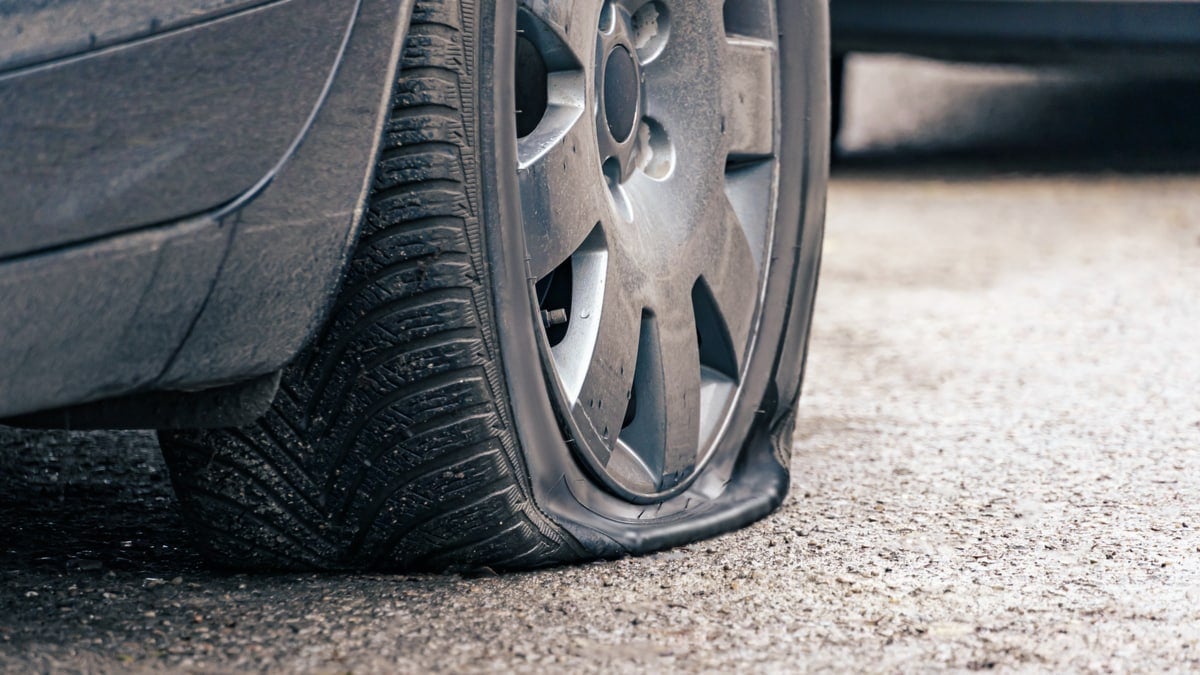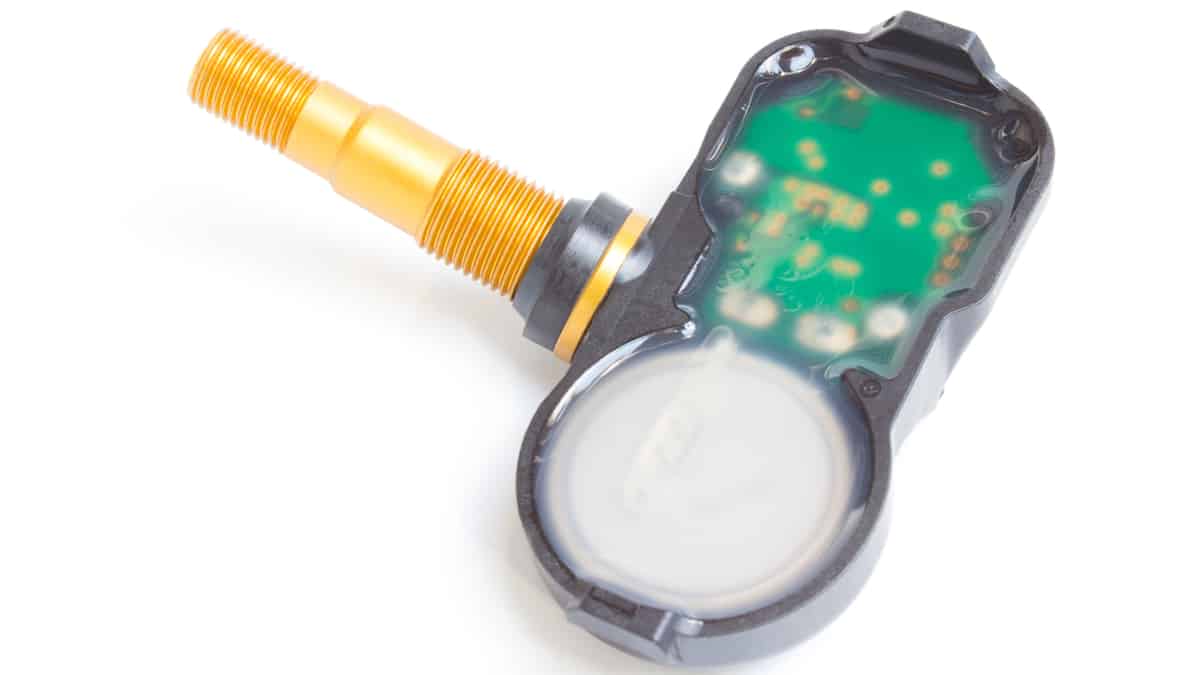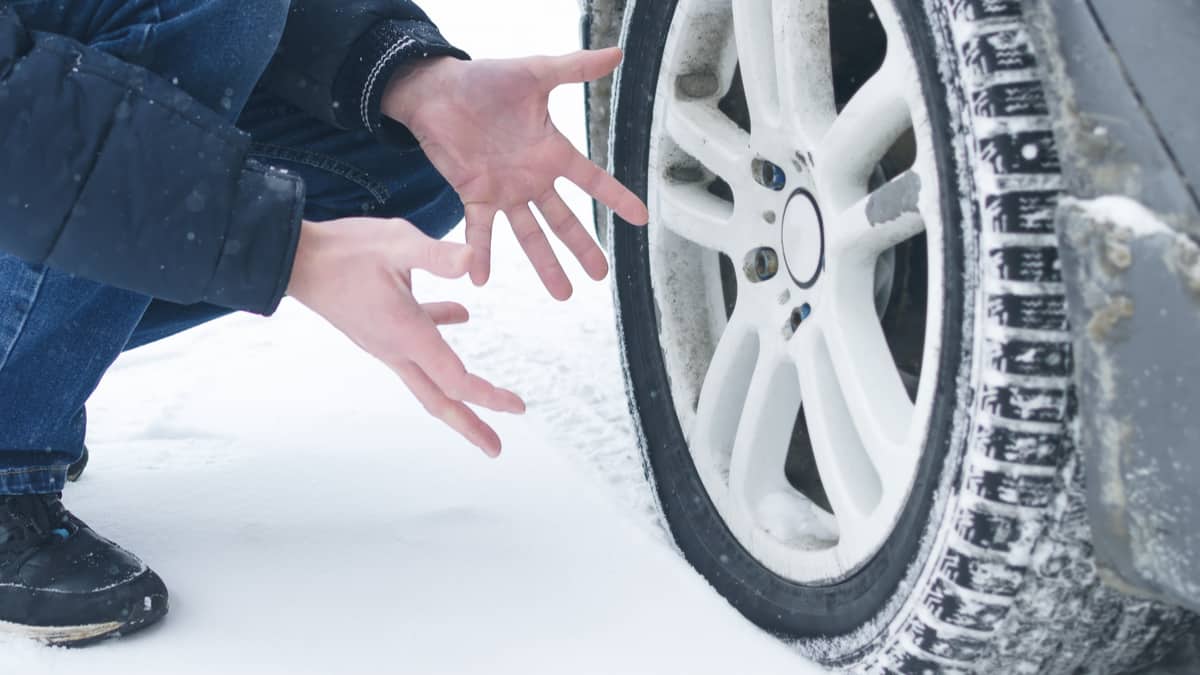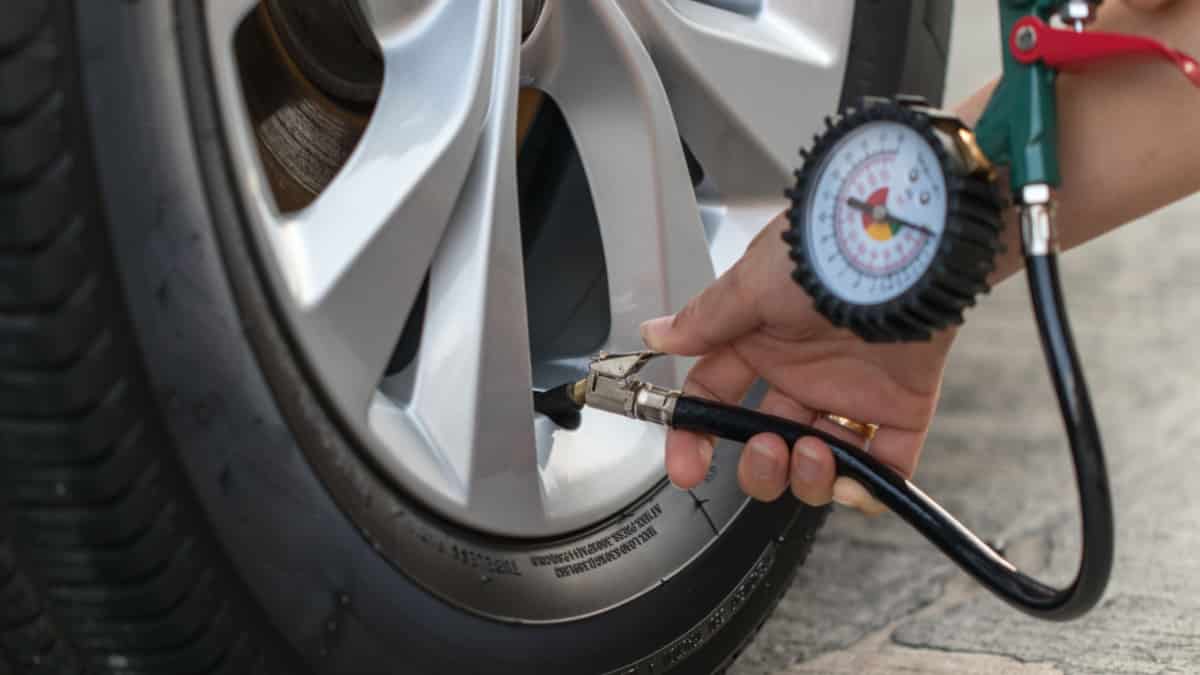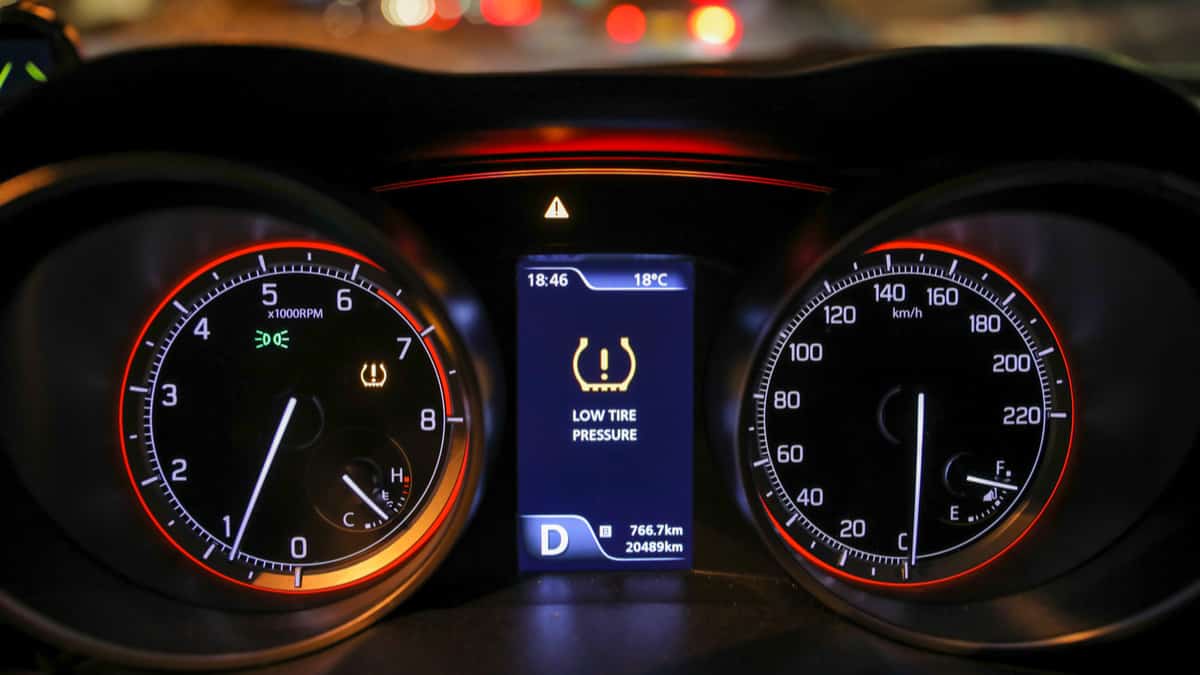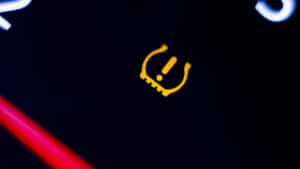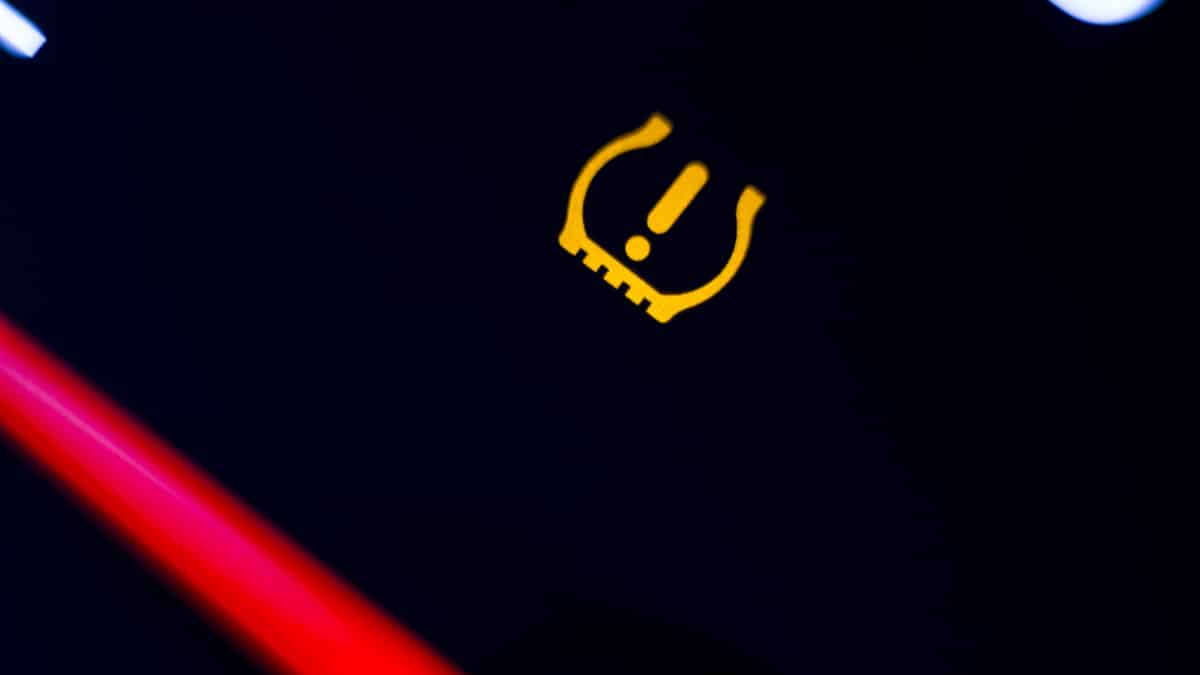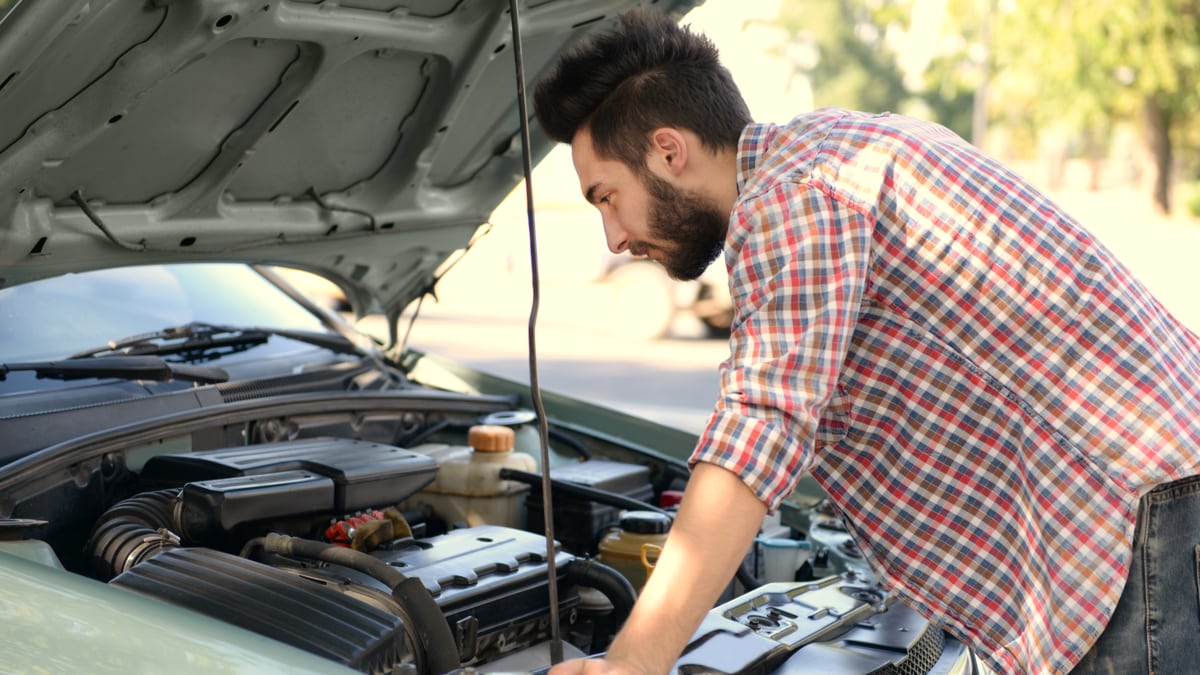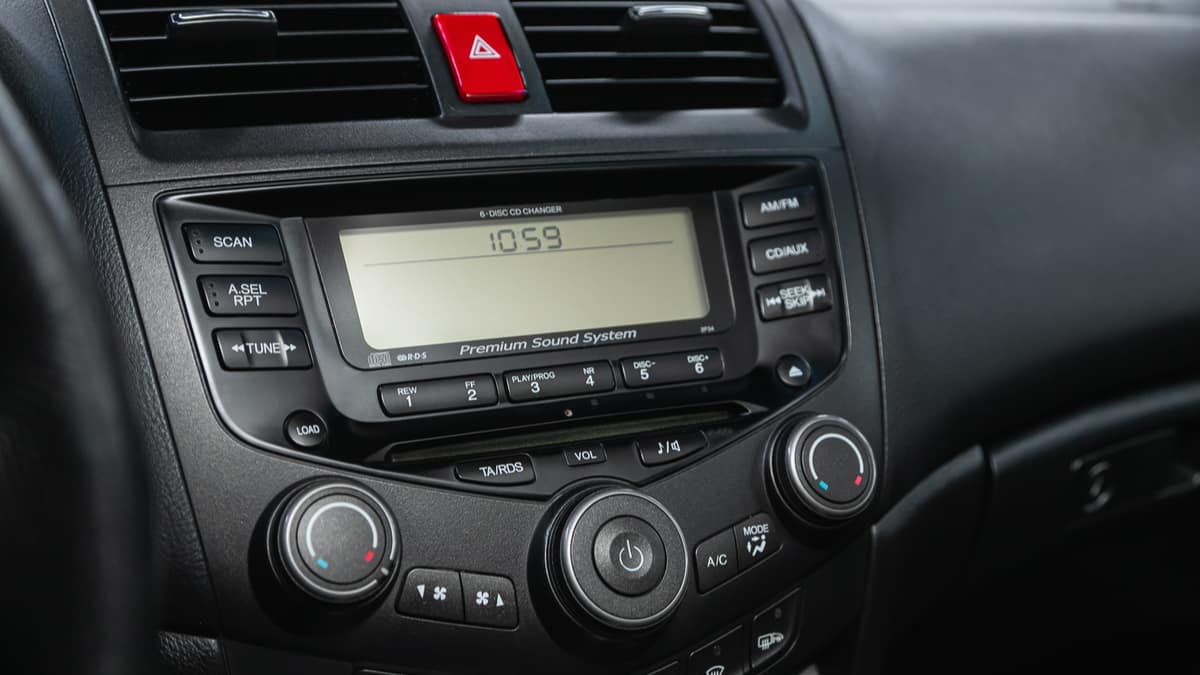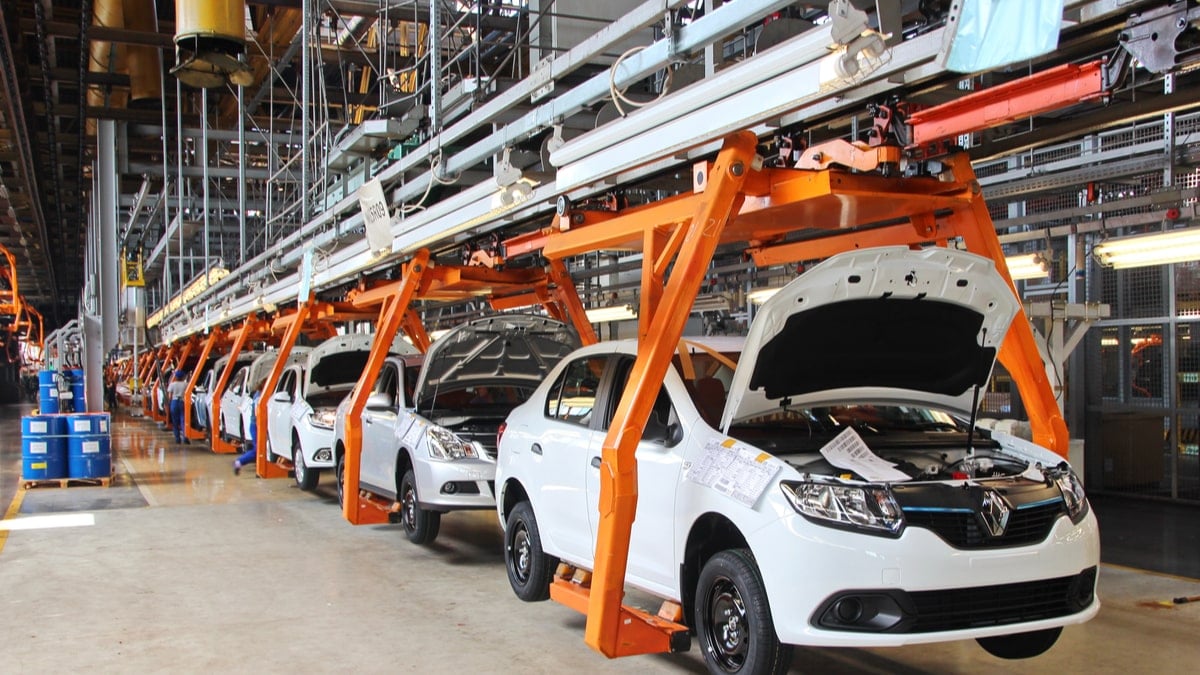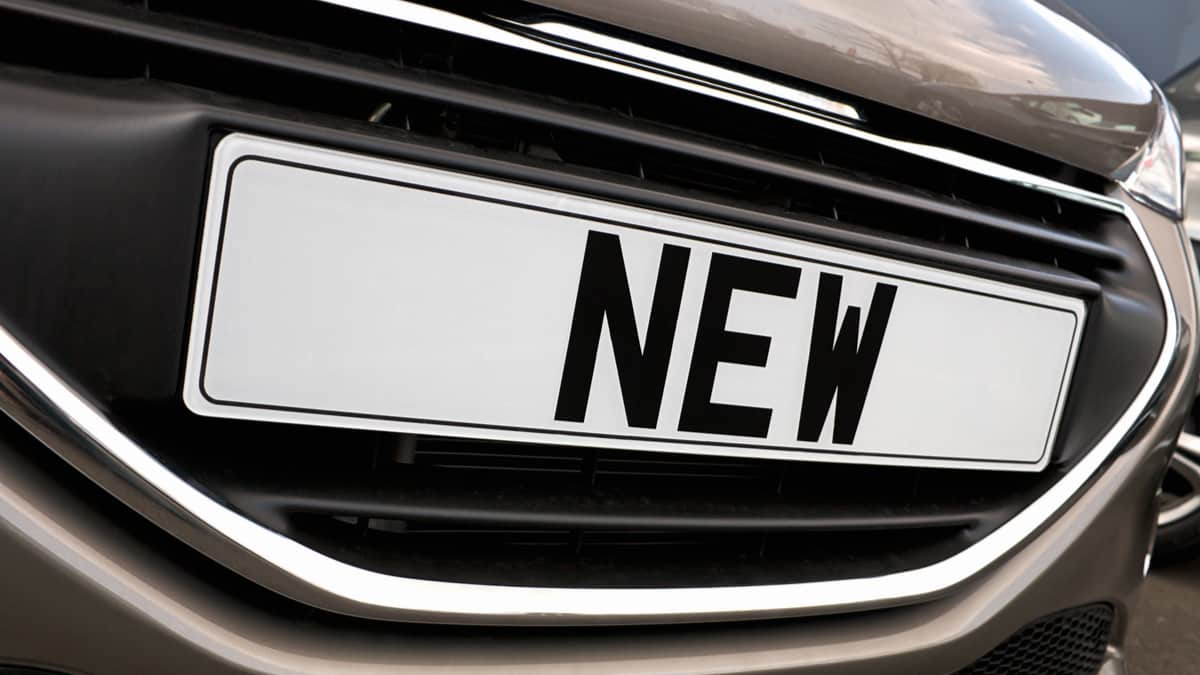Are you thinking of inflating your car tires, but have no idea what tire pressure is correct for your car?
Having the correct tire pressure in your car tires is very important – especially nowadays, when modern cars have tire pressure monitoring systems. If you run with the wrong tire pressure, you will see a TPMS warning light on your dashboard.
In this article, I will go through how you can find the right tire pressure, plus some other tips about tire pressure.
How to find the correct tire pressure for your car
The fastest and easiest way to find your car’s tire pressure is to check the label you can find near the door lock when you open the driver’s door.
Follow these steps to find the correct tire pressure for your car:
1. Check the label behind the driver’s door
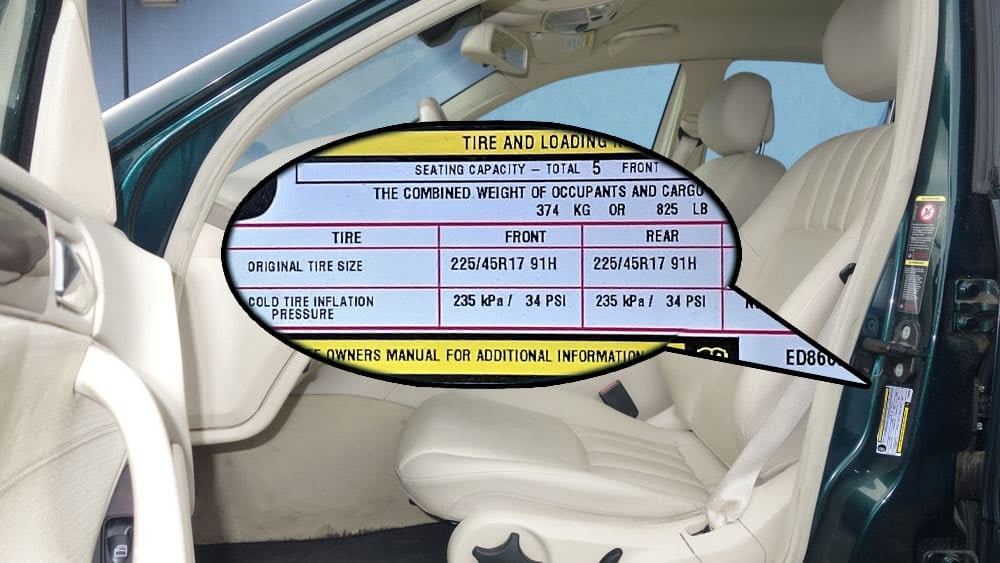
On almost all car models, you will find a label when you open the driver’s door. The tire pressure for the original tire sizes and how much you should inflate the tire depending on your vehicle’s load weight is often listed here.
Some cars do not have this label, and in this case, you have to try an alternative.
2. Check Service Manual

Almost always, when you buy a car, you will get a service manual describing your car’s basic functions. This manual is often located in the glove box together with the other documents. In this manual, you can often find what fluids you should fill your car with and your car’s recommended tire pressure.
If you can’t find this service manual, it is time to go to the next step.
3. VIN decoder

There are a lot of free VIN decoders out there on the internet. The downside of this is that you need to find the VIN of your car first. You can often find the VIN of your car below the front windshield, in the trunk, or under the hood.
On some US car part sites, you can also enter your license plate number to get your VIN and use it to find the correct tire pressure for your car.
4. Call Your Authorized Dealer

If you are not sure of finding the correct tire pressure by using the methods above, you can always call your authorized dealer for your car model’s brand.
They can often get the correct tire pressure within the blink of an eye, and you will not have to spend any more effort to find it.
What does cold tire inflation pressure mean?
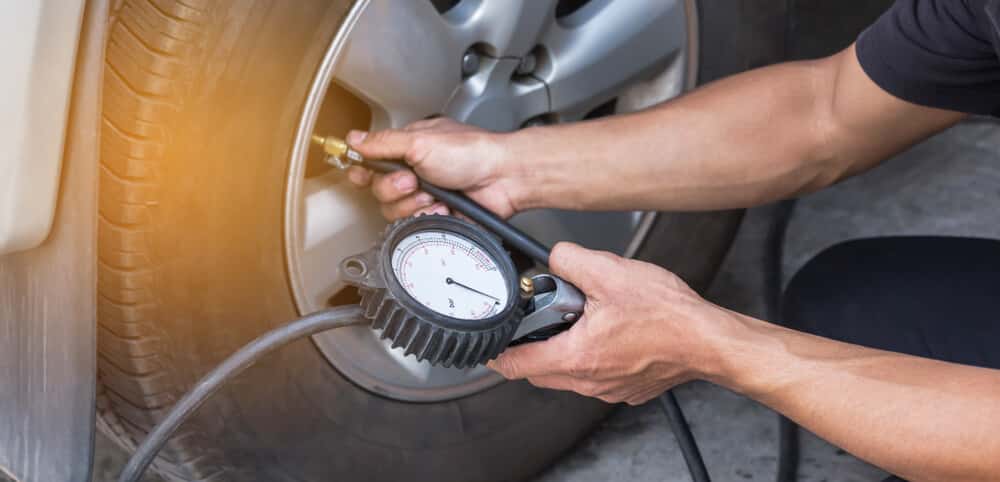
On the tire pressure labels, you will often find something named “cold tire inflation pressure.” What does this actually mean, and will it really make a difference?
You need to know that the tire pressure differs greatly in your tires depending on the tire’s air temperature. When you are driving for long distances, especially in warm weather, the friction will create a lot of heat in your tires, which will also add a lot of pressure.
So, what happens if you inflate the tires to 36 psi / 2.5 bar directly after this? It will probably sink to 32 psi / 2.2 bar when the tires cool down, and this will cause you to drive around with too low pressure when they are cold.
This is why it is listed as cold tire inflation pressure, and also why you should always inflate the tires when they are cold.
Is it better to have slightly lower or higher tire pressure than recommended?
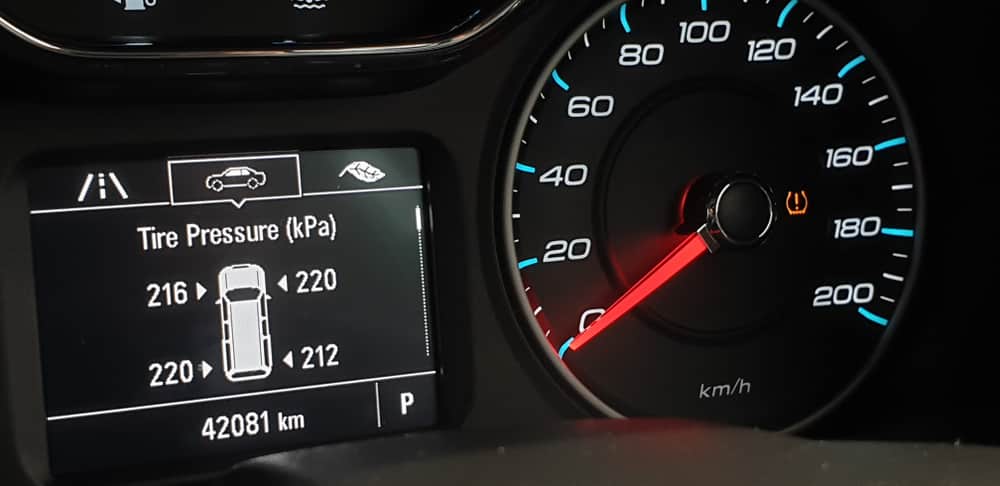
I often recommend inflating your tires with 1–2 PSI or 0.07–0.14 above the recommended tire pressure. This is because many modern cars have a tire pressure monitoring system, and these sensors are susceptible.
For example, in some cars, there is only a small difference between the recommended pressure and the pressure your TPMS system considers to be too low. The TPMS system is sensitive to this difference, and you can easily end up with a TPMS warning light on your dashboard.
As you may know, the tire pressure can differ depending on temperature, and to make sure the tire pressure light will not come on directly after you inflate your tire, you should have a slight pressure above the recommended.
Having too high pressure is always better than too low tire pressure.
How to find the tire pressure with aftermarket rims or tire size on my car?
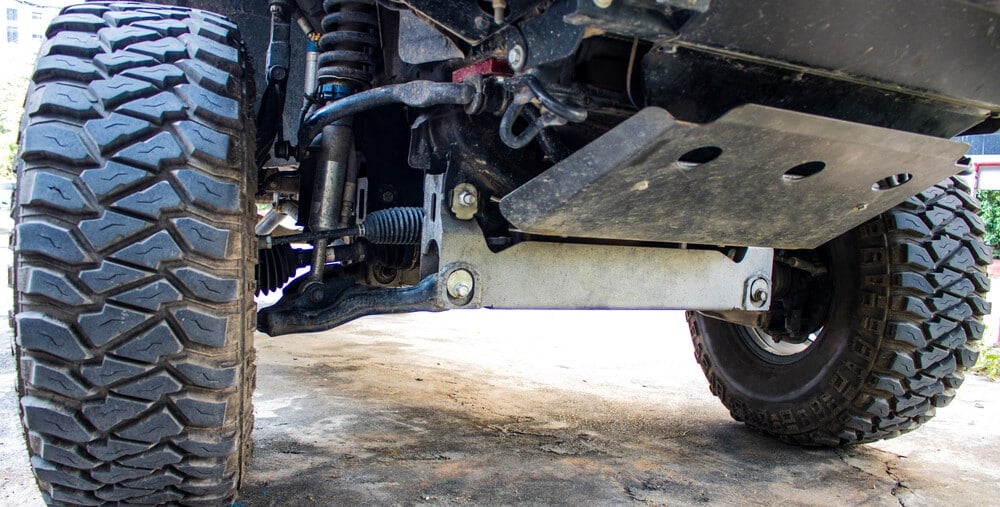
To find the tire pressure, if you have aftermarket rims or tires, you can either ask the place that sold the tires for the most accurate pressure, or check this list down below for a very general tire pressure chart. This is just a list you should use for a thumb rule and not a recommended tire pressure.
- Small Car; normal tire size: (around 185/55 – 15) ~ 2.1 bar (30 psi)
- Medium Car; normal tire size: (around 195/55 – 16) ~ 2.5 bar (36 psi)
- Large car; normal tire size: (around 245/55 – 18) 2.9 bar (42 psi)
In general, if you have bigger rims with a lower tire profile, you should use a higher tire pressure.
What is the correct tire pressure for my car?
There is no unique question about correct tire pressure, as this varies depending on the car. For instance, pickup trucks and full-scale SUVs have their tires inflated to a much higher pressure than those on small hatchbacks. Furthermore, higher tire pressure is needed when having luggage and other loads inside the trunk or the vehicle’s roof. You can find exact and accurate tire pressure values for your car on a label inside the driver’s door. Alternatively, you can look up this information in the owner’s manual or on the Internet.
Is 40 psi tire pressure good?
40 PSI is likely to be the correct tire pressure for a large SUV or a car with low-profile tires. In addition, rear tires might have to be inflated to this pressure when driving with a fully loaded trunk. These, however, are not universal values, as recommended tire pressures differ depending on the make and model. Inflating the tires to the recommended pressure is vital for the car’s safety and performance.
Is 36 psi too high for tires?
If you’re driving a medium-sized vehicle, 36 PSI is most likely to be the correct tire pressure. This is especially true if the car rides on 16-inch wheels and 205/55 R16 tires. However, this pressure would be too high for most compact cars, as these are usually fitted with smaller tires. On the other hand, tires on large SUVs and pickup trucks would be slightly underinflated at this pressure, as these usually run at 40 PSI.
What tire pressure is too low?
Strictly speaking, tire pressure is considered too low when its value is below the level recommended by the car manufacturer. The information about exact tire pressures can typically be found on a sticker inside the driver’s side door or in the owner’s manual. In addition, most modern cars have a tire pressure monitoring system, or TPMS, which continually monitors the pressure in all four tires. If any of them becomes underinflated, the TMPS will warn the driver with an appropriate message.
Having tires inflated to the correct level is vital to the car’s performance, safety, and gas mileage. While underinflated tires will result in poor fuel economy and less precise handling, too high tire pressure will reduce grip and increase the risk of a blowout.
However, the pressure to which tires should be inflated differs depending on the make and model. You can find exact and accurate tire pressure values on a label inside the driver’s door. Alternatively, you can look up this information in the owner’s manual or on the Internet.
Sources
Categories: Guides, Maintenance, Tires
